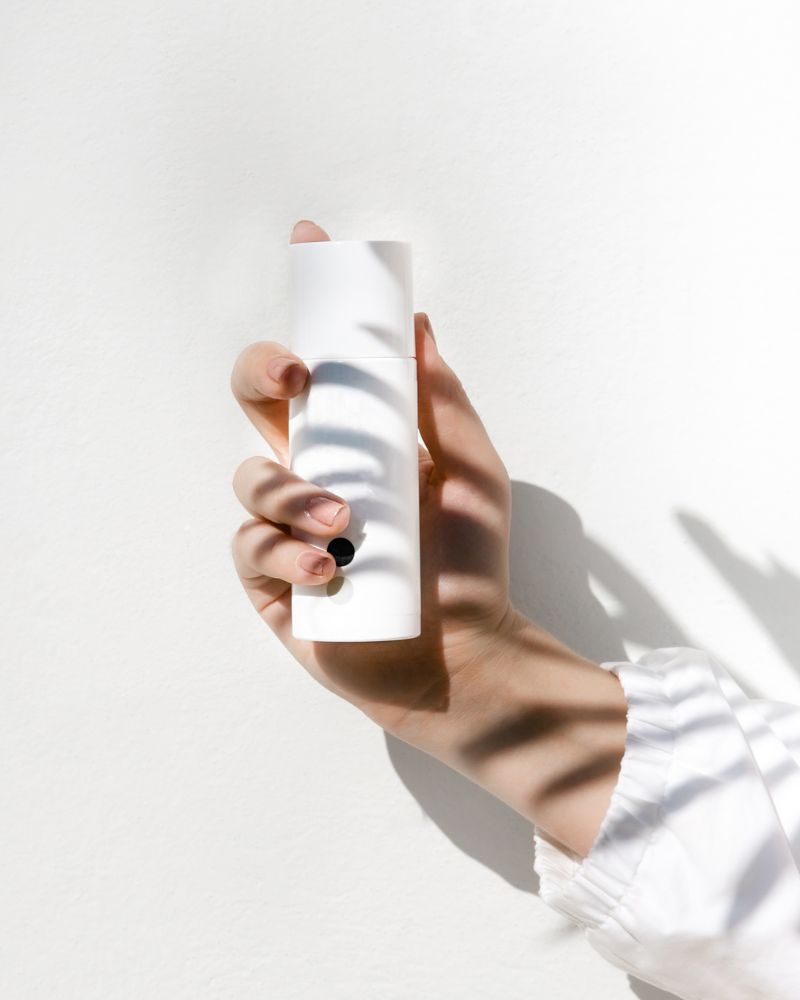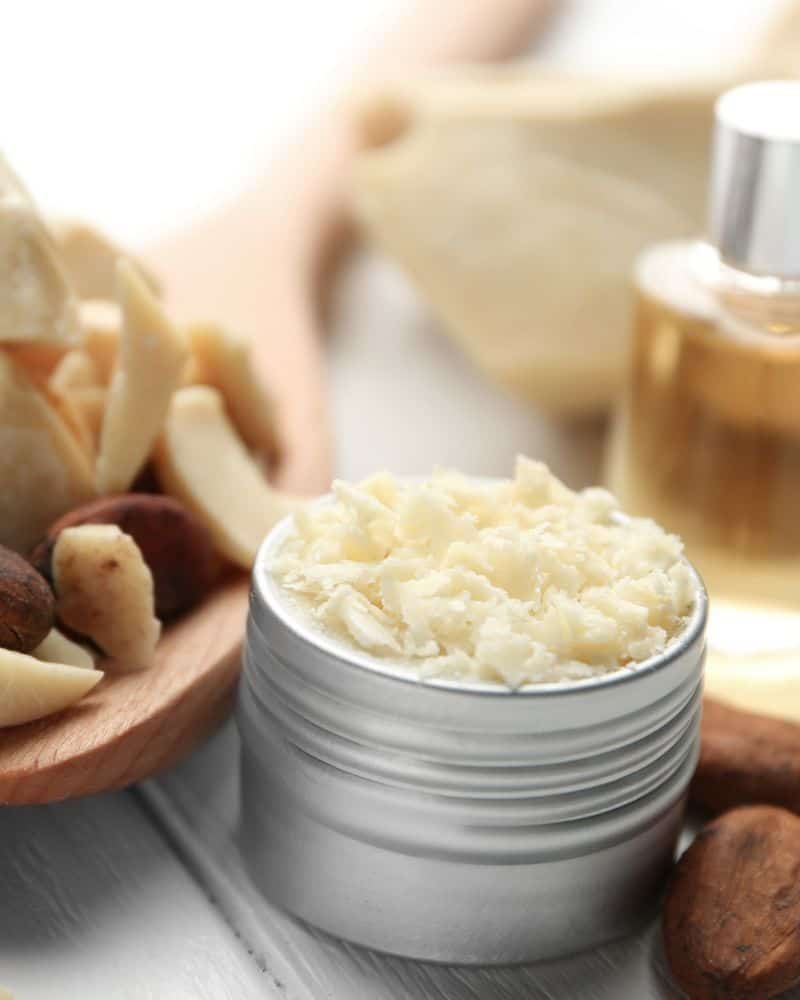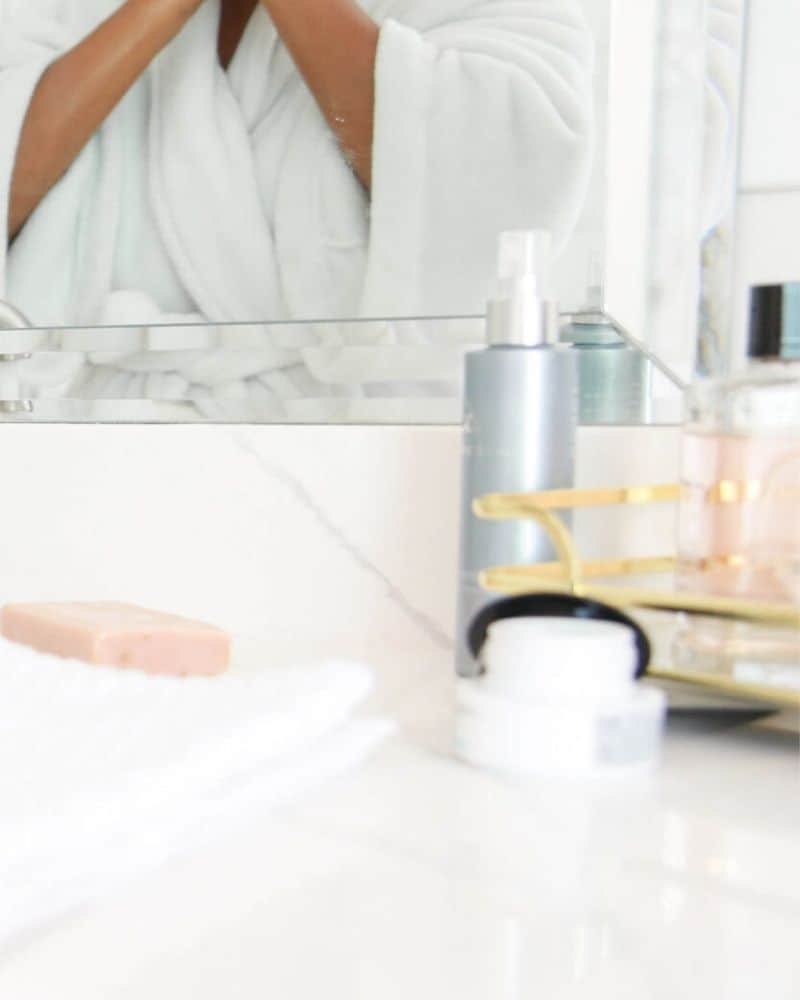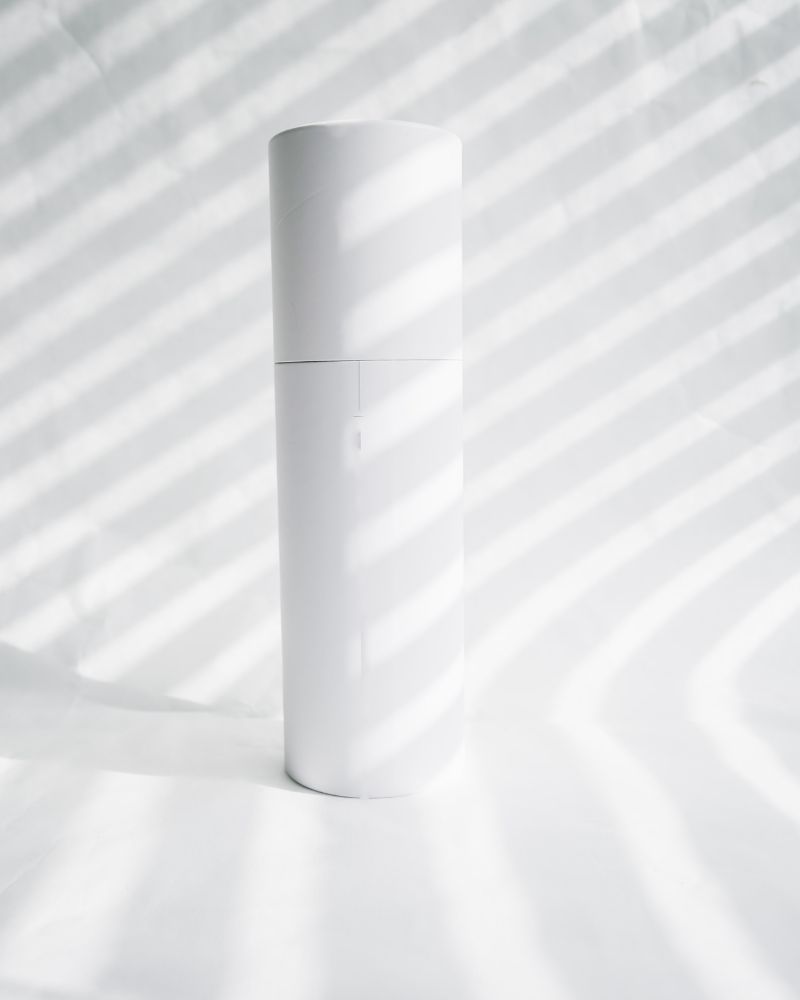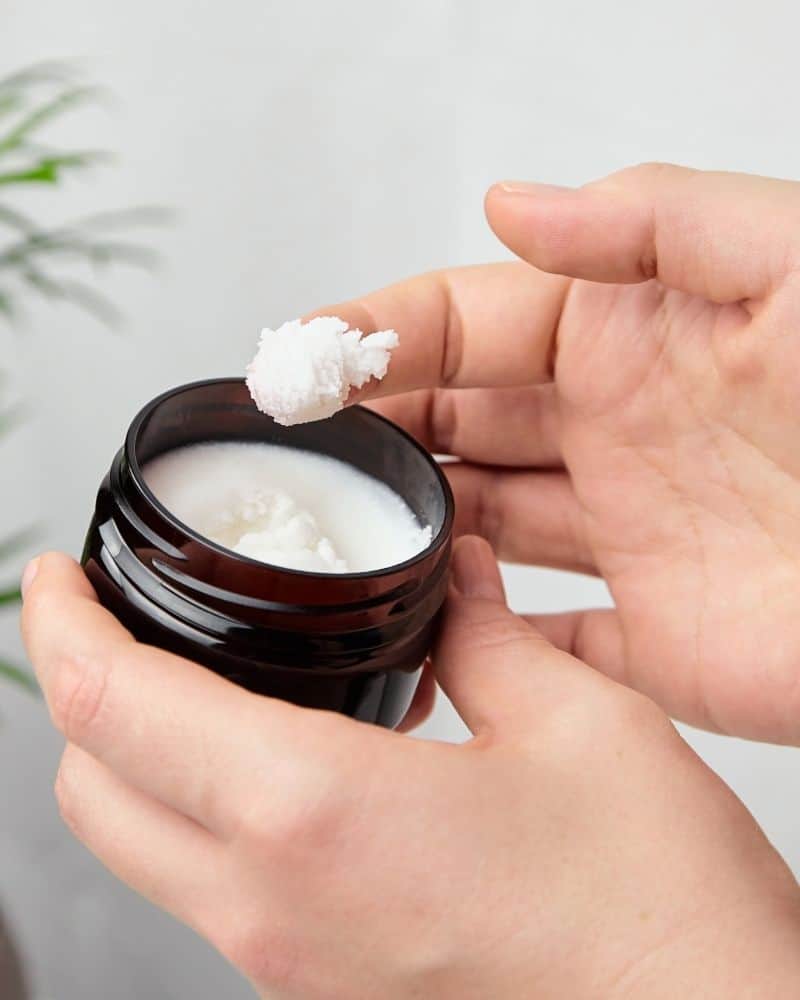Switching From Retinol To Tretinoin: 6 Things To Know
This post may contain affiliate links.

If you’re thinking about switching from retinol to tretinoin, there are a few things you should know. Tretinoin is a stronger retinoid, so it can be more effective at treating acne and wrinkles. However, it also comes with some potential side effects, like dryness and irritation. Here’s what you need to know before making the switch from retinol to tretinoin
Retinol Vs Tretinoin

Hang with me, cause this can get confusing. Both retinol and Tretinoin belong to a group called retinoids. “Retinoids” is simply an umbrella term for Vitamin A compounds and Vitamin A derivatives.
These compounds basically shed dead skin cells and help our skin cells rejuvenate faster.
Now, there are a lot of different types of natural and synthetic retinoids. Certain retinoids are available OTC, while others are prescription-only. Now let’s dive a littler deeper into the differences between tretinoin and retinol.
Retin-A is the brand name of the product, while tretinoin is the generic. Retin-A and tretinoin are the same thing.
Tretinoin (or Retin-A) is retinoic acid. The most effective and potent form of Vitamin A. The gold standard in anti-aging and acne. In fact, it’s about 20 times more potent than retinols!
It was first developed as an acne treatment, but it was soon discovered that it has amazing anti-aging properties, too!
Retin-A, or tretinoin, is typically prescribed to treat acne or to help with anti-aging. Retin-A is commonly prescribed for acne treatment, as it’s FDA approved to treat acne and not only can it help clear up the skin, but it also helps to fade acne scarring.
As mentioned above, retin-a is more potent and more effective then OTC retinol. This is because It does not have to be converted by the skin. Once it’s applied, it starts working. However, that does come at a price. Retin A is more irritating than OTC weaker forms of retinol.
Retin-A usually comes in either a cream or gel form and can range in strength. Most doctors will prescribe the lowest strength (0.025%) first and then increase the strength as needed (up to 0.1%).
Retinol is a form of Vitamin A that has been long used in skincare products to help reduce the signs of aging and improve skin tone. It works by encouraging cell turnover, which can help to reduce wrinkles, age spots, and other signs of aging.
Retinol is available over-the-counter in lower strengths, while tretinoin is a prescription-strength retinoid and is usually more effective.
Retinol is a type of vitamin A that is commonly found in skincare products. It is known for its ability to stimulate collagen production and improve the appearance of fine lines, wrinkles, and uneven skin tone. It is also effective at unclogging pores and reducing the appearance of acne. Retinol is typically used in products such as serums, creams, and toners.
Retinol is a weaker Vitamin A compound than tretinoin. It’s not as potent or effective, but also not as irritating. Retinol is a synthetic retinoid that is commonly found in OTC products from serums to creams.
Related post: Does Retinol Cream Really Expire?
In order for our skin to be able to use retinol, it first has to go through two conversions to be converted to retinoic acid. Retinoic acid is the only form of vitamin a that our skin can use. So, when retinol is applied to the skin, it is ineffective until it gets converted. This conversion can take some time, which is why retinol is less effective than tretinoin (and more gentle/less irritating on the skin).
Although it’s gentler on the skin, the conversion process also makes it less stable than tretinoin. Which means it can go bad quicker and degrade easier.
It’s also important to note that OTC retinols are not FDA approved, unlike tretinoin. Tretinoin is FDA approved to treat acne and signs of aging.
So, what does this mean if you’re switching from retinol to tretinoin? Well, it means that you’ll be using a stronger, more effective product. It also means that you may experience more irritation and redness as your skin adjusts to the stronger retinoid. However, with the right tips, you’ll be able to transition to using tretinoin without too much discomfort.
Can You Switch From Retinol To Tretinoin?

Those that start out with OTC retinol products, may eventually want to try a stronger retinoid. And while there are tons of OTC products with varying strengths of retinol, there just not as strong as prescription tretinoin. So if you’ve been using retinol and not seeing the results you want, you may be wanting to try something more powerful.
So can you switch from retinol to Retin-A?
While both of them are retinoids and work very similarly, tretinoin is better for anti-aging, stimulating collagen, fading hyperpigmentation and acne scars and treating acne. Retinol can do these things as well, but it’s not as strong or fast-acting as tretinoin. So if you’re looking for a stronger more effective product, then yes, you can switch from retinol to Retin-A.
Many people who start using retinol eventually switch to tretinoin or Retin-A for its anti-aging effects and better results. Of course, they should never be used together and always used on alternate nights.
Should You Alternate Tretinoin and Retinol?
Since tretinoin and retinol are a little different in terms of the benefits for the skin, many people wonder if you can use retinol and retin-a on alternate nights.
You can alternate between retinol and Tretinoin, but you need to always use them on alternate nights and never use them together on the same day.
Do keep in mind that using both retinol and Retin-A is a little redundant, as Retin-A is FDA approved for both acne and anti-aging. So you can tackle aging concerns and acne with just a single product instead of using (and paying for) two separate products.
How Much Stronger Is Tretinoin Than Retinol?
Not only is tretinoin stronger than retinol, it also works quicker. Studies have shown than tretinoin and Retin-A are at least 10 times stronger than OTC retinols.
Of course, since it’s so much stronger, it’s also associated with increased dryness and irritation.
How Do You Transition To Tretinoin?
If you’re wanting to make the switch from retinol to tretinoin, there are a few tips to make the adjustment period as smooth as possible.
The most important thing is to start slow and give your skin time to adjust to the stronger retinoid. Start by using tretinoin just once or twice a week and gradually increase usage as tolerated.
You can also “buffer” the tretinoin by applying moisturizer before applying tretinoin. This will help to “dilute” the tretinoin so it’s not as strong and it will help your skin slowly adjust without a ton of irritation and dryness.
- Start low – Start with the lowest strength available: 0.025% tretinoin and work your way up if needed
- Avoid harsh products – Switch to a gentle cleanser and avoid using harsh exfoliants or physical scrubs
- Use cream – The cream version will be more gentle on the skin and less irritating than the gel
- Start slow – Begin using tretinoin 1-2x a week and slowly work your way up to every other day or every day as tolerated by your skin
- Avoid other actives – During the adjustment phase, don’t use any other actives like vitamin c, salicylic acid, glycolic acid, etc
- Moisturize, moisturize, moisturize – Make sure to keep the skin hydrated and use a moisturizer both during the day and at night. You might even need to use a heavier moisturizer or occlusive to slug during the adjustment period
Another thing to keep in mind is that when you start to use a stronger, more effective retinoid, you are likely to experience what’s called a tretinoin purge. This is when you may experience more breakouts while the retinoid works to clear out your pores. Just stick with it and remember that it’s temporary, and soon you’ll see clearer and smoother skin!
Related post: How To Switch From Tretinoin To tazarotene
When To Switch From Retinol To Tretinoin

If you’re contemplating making the switch from retinol to Retin-A, but aren’t sure if it’s the right time, consider your skin concerns and skincare goals.
If you find that you are starting to see some signs of aging like fine lines, wrinkles and loss of firmness, making to switch to tretinoin may be a good option for you as it can target those issues better than retinol.
Or if you have acne or texture issues that just aren’t improving with OTC options, switching to tretinoin can give you better results.
However, if you are happy with your skin, the switch may not be necessary! Retinol is a great product that can effectively treat acne and improve skin texture, so stick with it if you are happy with the results. Not to mention, is more readily available since it’s now OTC whereas tretinoin is still prescription only and tends to be more expensive. Of course, there are always teledermatology services like Curology or Apostrophe that tend to be cheaper, especially if your insurance doesn’t cover tretinoin.
Related post: Switching From Retinol To Differin
Switching From Differin To Tretinoin Wrap Up
Switching from retinol to tretinoin can be a great way to get better results for your skin. If you just aren’t seeing the results you want with OTC retinol products, making the switch is a good option. It’s stronger, more effective and works faster than retinol. However, it’s important to start slow and give your skin time to adjust with the stronger retinoid. If you experience any dryness or irritation, try buffering the product with moisturizer or using a cream version instead of gel.
